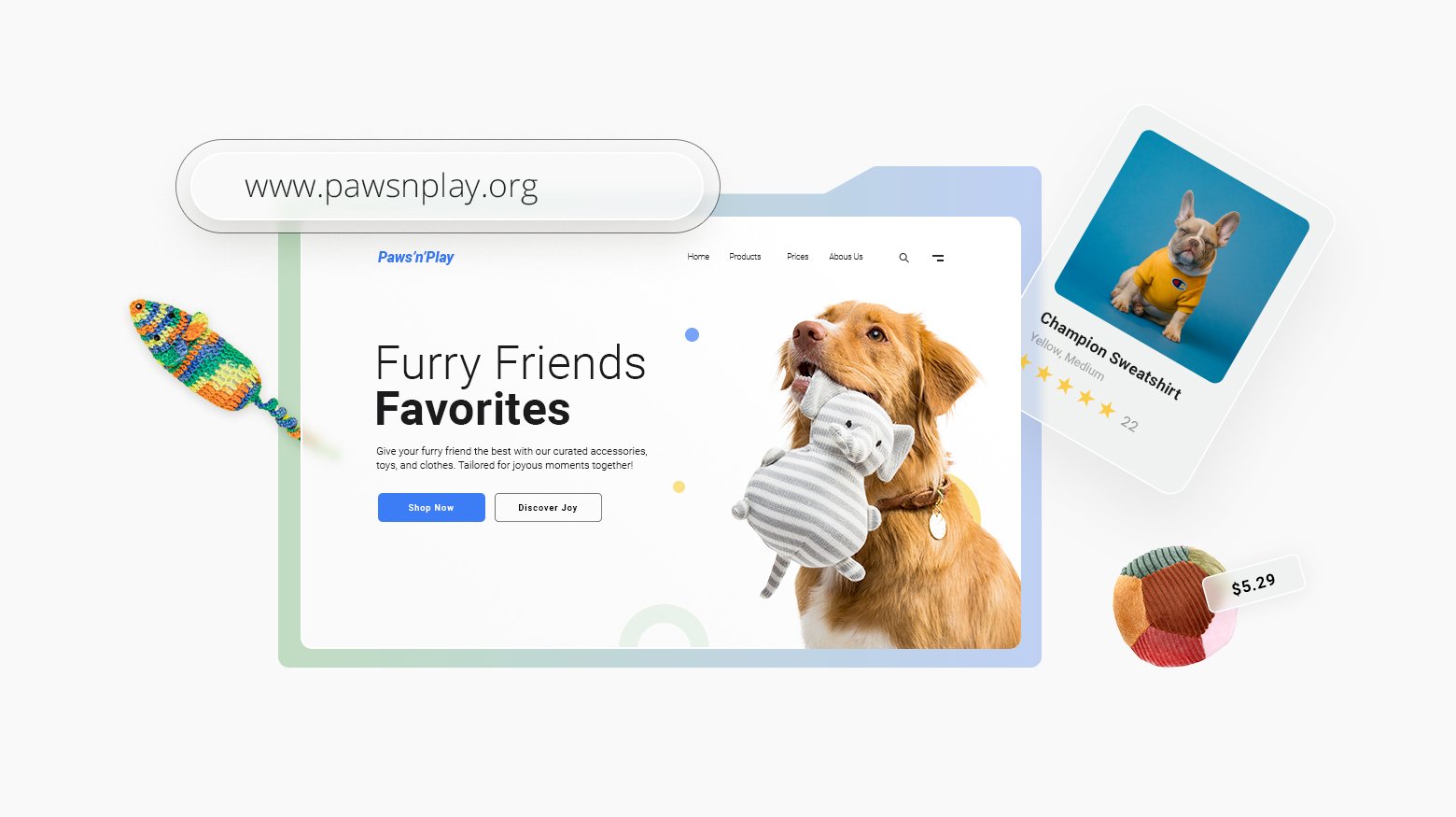Digital templates are in high demand right now. This includes social media graphics, resumes, budget planners, and the most highly demanded of all–website templates. People want quick, ready-made solutions to save time and get professional results. I can recall a few times I used ready-made templates in the previous year to create a portfolio, CV, or webpage. Businesses, students, and even event planners are all looking for templates to make their lives easier.
The growing demand for templates can be closely tied to the rise of entrepreneurship, especially among younger generations. As more individuals start their own businesses, they’re looking for tools to save time and effort. Global Entrepreneurship Monitor (GEM) 2022–2023 USA report found that entrepreneurial activity reached record highs in 2022, with young entrepreneurs leading the way. For these new business owners, templates are a simple, efficient alternative to building designs from scratch.
Understanding the template market
Before creating and starting the real sales and marketing of your templates, let’s get a clear picture of the template market. What kinds of templates are people buying? What are some of the most in-demand template types?
1. Graphic design templates
Think of Instagram posts, Pinterest pins, and presentation slides. Social media managers, content creators, and businesses are always looking for designs that are eye-catching and easy to customize. To save time, they often use a template that’s ready to go.
2. Website templates
Small business owners, bloggers, and even startups want clean, functional, and professional sites without hiring a developer. Whether it’s WordPress themes, a landing page layout, or basic HTML designs, the demand for website templates is huge. Many entrepreneurs are looking for quick and cheap solutions for their online presence. They want to enter the market with their business idea but have little resources or knowledge of website creation. So they use ready-made templates. Or they use tools, like the AI Website Builder, to create or regenerate any page tailored for their sites.
3. Business documents
Professional resumes, business plans, invoices, and contracts are lifesavers for busy professionals. Imagine you’re hiring and your inbox is flooded with hundreds of resumes. Chances are, you’ll skip over the ones with messy, hard-to-read layouts and focus on the clean, well-organized ones that stand out. A well-designed resume template that uses clear headings, consistent fonts, and a balanced layout to guide the recruiter’s eye to key information can grab attention and get the applicant into an interview. That’s why such documents are in demand.
4. Marketing materials
Businesses and marketers are always on the hunt for tools to promote their products or services effectively. Great design, clear headings, organized descriptions, and clean CTAs (calls to action) are what make people stop, look, and act.
Think about it: you’ve likely come across two types of flyers. One crams all the information onto a single page with no spacing, no visuals, and text that feels impossible to navigate. The other uses an inviting design—images that guide the eye, clear sections with concise text, and a prominent CTA like “Visit Our Website” or “Shop Now.” The second flyer works because it’s easy to understand, visually appealing, and tells you exactly what to do next.
The best part is that these categories already have eager buyers ready to pay for quality templates. Your job is to figure out which one fits your skills and interests. Don’t stress—we’ll cover how to do that in the next section.
For now, ask yourself this: Which of these categories excites you the most? When you mix what you love with what people need, success follows.
Why is selling templates beneficial?
Selling templates is a simple and practical way to turn creativity into income. Whether you are a designer or creator, you will get some great benefits, for instance:
- You can earn passive income by creating once and selling over and over.
- It is low cost to start. All you need is creativity and some basic tools.
- It has high demand. Everyone loves tools that save time, and templates are perfect for that.

Create your online store in minutes!
Looking to sell online? Develop and launch your store with 10Web AI Ecommerce Website Builder.
How to sell templates online: step-by-step
With a clear idea of the growing demand for templates and the different categories you can explore, it’s time to get practical. Let’s break down the actual steps you need to follow to start selling templates online and build a successful business.
Identify your target audience
Once you’ve decided which category of templates to sell, the next step is zeroing in on your target audience. Who are they? What do they need? The clearer you are about your ideal buyer, the easier it will be to create templates they’ll love.
This is my favorite part before starting product sales because it’s all about understanding the people who will actually use your products. At this stage, you get to identify and refine your audience, which feels like piecing together a puzzle—you’re figuring out who they are, what they need, and how your templates can make their lives easier. I also love doing the research here because it’s where you learn the pain points of your potential customers. There’s something so rewarding about learning what they’re struggling with and knowing you have created a solution just for them.
These are the steps I usually go through to identify the target audience.
Start with the basics
Think about the main users. For example:
- If you are selling resume templates, target job seekers and professionals.
- If you are selling media templates, look at influencers, small business owners, or marketers
Research their pain points
If there’s one golden rule in selling anything, it’s to understand your customer’s pain points. These are the challenges or frustrations your audience faces. Addressing them, you can exponentially increase sales by creating targeted marketing materials.
For instance, small businesses might struggle with branding or marketing consistency. Job seekers might need resumes that stand out. To get a grasp of the potential customer’s pain points, you can do the following things:
- Listen to conversations: Join forums, groups, or Reddit threads where your audience hangs out. Pay attention to common problems they mention, like struggling with design or branding.
- Check competitor reviews: Read feedback on templates similar to what you are going to sell. Look for complaints or requests that can guide you in creating a better product.
- Survey your audience: Ask your followers or email subscribers directly about their challenges. Simple questions like “What’s your biggest design struggle?” can offer great insights.
- Analyze trends: Use tools like Google Trends to find what’s popular in your specialized focus. For example, rising searches for “clean resume templates” might signal a demand for simplicity.
When you design with your audience’s struggles in mind, your templates become exactly what they’re searching for—and that’s a win for both you and your customers.
Create high-quality templates
I once downloaded a template that promised to make my work easier. I was excited—finally, a shortcut to save time! But when I opened it, I was hit with disappointment. The design was messy, the layout didn’t make sense, and customizing it felt like sorting out a knot. After an hour of frustration, I gave up, wondering why I’d wasted my money.
Now, imagine if that template had been well designed. What if it had clear instructions, an intuitive layout, and editable features that made customization easy? It would have saved me time, effort, and stress. That’s the power of a high-quality template.
Creating high-quality templates is about delivering that kind of experience. Here’s how to ensure your templates are great:
Master design principles
Make your templates simple to edit, even for beginners. Clear layouts and editable elements go a long way. Also, follow design trends to create templates that stand out. Buyers love polished, professional looks that align with current styles.
Using the right tools
Platforms like Canva are beginner-friendly and diverse for a wide range of designs. For advanced customization, tools like Adobe Photoshop or Illustrator are great.
Stay original and compliant
Use royalty-free or licensed assets, and avoid copying others’ work. Know the rules if you’re using tools like Canva, ensuring your templates comply with their licensing terms.
When your templates are beautiful, easy to use, and original, you’re solving a problem. And that’s what turns buyers into loyal customers.
Set up your online store
Your templates are ready, now it’s time to show them online. But here’s the big question: where do you sell them? Setting up your own online store gives you control over your brand, pricing, and customer experience—and with tools like 10Web’s AI Website Builder, creating a professional store has never been easier.
Here’s how to generate your store with 10Web in just a few steps:
- Go to 10Web.io > provide your website’s name > describe it in a few words > click Generate Your Website.
- Review the Website name and description.
- Click Next > review the website structure that AI’s created.
- Click Next > choose the website colors, fonts, and styles.
- Click Generate to apply.
A user-friendly, professional, and clean website will save you a lot of headaches and help you land in the online template-selling market. Templates are one of the rare things you can only sell online, so this step is very important to make a great impression on potential buyers.
Present your products in the best light
How well you will sell your templates depends on how well you can present them online. All you need is a clear description and great visuals.
Write good descriptions
Your product description should explain what your template is, who it’s for, and why it’s useful. Focus on benefits rather than just features. For example, instead of saying, “This is a social media template,” try, “Easily create professional Instagram posts to boost your brand.” When you have a clear idea of your potential customer’s pain points, you can create a description that addresses those pains.
Keep it short and to the point, using simple language that highlights how the template can save time or solve a problem.
Use high-quality images and previews
Good visuals help buyers see what they’re getting. Include high-quality images that show your templates in use. For example, display a resume template in a realistic mockup or show a set of social media templates on a phone screen.
Offer multiple previews to highlight different features, like customization options or layout details. If possible, create a short video showing how the template works. This can give buyers more confidence in your product.
A well-presented product makes it easy for buyers to see why it’s the right choice for them. Focus on clarity and quality to succeed.
Sell and scale your template business
Once you’ve started selling your templates, the next step is growth. Scaling means diversifying and meeting the needs of a broader audience. Things you can do to scale your template-selling business.
Expand into different categories
This is just optional, so if you want to stay in the category you are selling, you can skip this step. But if you are thinking about the audiences you’re not reaching yet, consider branching out into the categories they might need. If you’re focused on social media templates, why not create designs specifically for bloggers or podcasters?
The thing here is to identify new groups that can benefit from your templates. Research their pain points and customize your designs to solve their problems. The more categories you tap into, the bigger your potential market becomes.
Offer premium and customizable options
As your business grows, not all your customers will want the same thing. Some might be willing to pay more for extra features or customization options. Create premium templates with added value—like unique design elements, multiple formats, or extended usage rights.
You can also offer fully customizable templates for those who want something tailored to their needs. This not only increases your revenue but also helps you build stronger relationships with customers by providing exactly what they’re looking for. You can even give exclusive rights to the premium users for the templates they want to customize. This is something that will set you apart in the marketplace.
Think big picture
Scaling your business means growing smart and it’s about offering more as you grow. By reaching new audiences and creating premium options, you can increase sales and build a brand people trust and come back to.
Conclusion
You have decided to make extra money or start a business by using your creativity and making templates online. With high demand across industries—from social media graphics to resumes and website templates—there’s no shortage of opportunities to grow selling templates. Templates save people time and effort, making them an essential tool for businesses, entrepreneurs, and students alike.
The process isn’t complicated. By following the steps in this guide, you can succeed. To sum up, start by understanding your audience, designing high-quality templates that solve their problems, and presenting them in a way that’s clear and professional. Use tools like 10Web to set up your online store with ease and focus on marketing strategies to reach the right customers.
As you gain momentum, you can expand into new categories or offer premium options to scale your business. Start creating, start selling, and watch your template business grow!
FAQ
Can you make money selling templates?
Can I sell templates online?
What is the best platform to sell templates?
What types of templates sell well?
How to market and promote template designs?
How to stand out in the template marketplace?

Create your online store in minutes!
Looking to sell online? Develop and launch your store with 10Web AI Ecommerce Website Builder.














